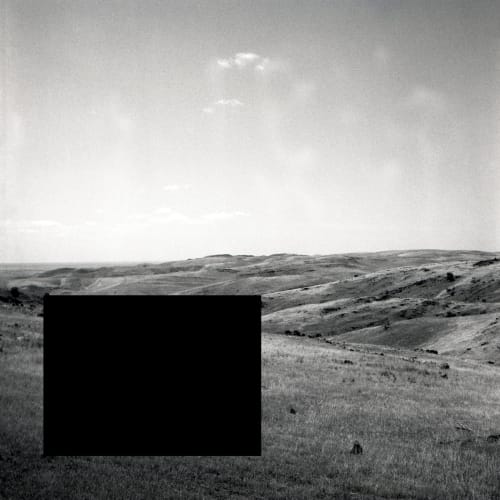It was inevitable, from when the first British footprints impacted the sands on Gadigal Country in Warrang/Sydney, the colonial regime would have devastating effects on anything it encountered. From 1770, for Aboriginal people across the now named ‘Australia’, there would be a continuing destructive reign resulting in the generational loss, devastation and erasure of people, place, and Culture. These and other systemic incursions are continual forms of the colonial regime imposed over Aboriginal land and people; and for James Tylor, a key component of his series ‘From and Untouched Landscape’. With his Aboriginal, Māori and European heritage, Tylor draws on his and his Community experiences – where the edges of his identity meet, and where they are interrupted by colonial intervention.
These multi-faceted series serve as a photographic self-portrait for Tylor, while also highlighting the missing or removed elements of people and culture from within the landscapes. Hauntingly, these capture moments provide a point of connection for other Aboriginal people who identify with the disrupted imagery and historical premise behind the series. From the onset of colonial contact, Aboriginal culture, identity, and people within colonist texts and imagery were either consciously or subconsciously removed, whilst in parallel the erasure was unfolding in reality. This perpetuated censorship of Aboriginal people and culture ultimately erased the Indigenous presence from, what was then, a fledging nation.
‘From an Untouched Landscape’ provides an Aboriginal perspective and a counter narrative to colonial representations of Aboriginal people and culture that are still being consumed, unchallenged and reinforced by local and global audiences today. Narratives that suggest and only re-iterate the colonial perception of Australia as an ‘untouched’ ‘wilderness’ ‘discovered’ by James Cook(ed), ‘underutilised’ by its First Peoples.
While drawing on these perpetuated narratives, Tylor’s dark and contrasting geometric shapes, replace specific areas in the landscape, evoking the concept of loss and censorship of Aboriginal people in colonial narratives. By obstructing and erasing these areas from within the frame, using deliberately formulated shapes as intrusions, they create a disruptive mechanism, thereby censoring and preventing the viewer from sighting the whole landscape. Mysterious in aesthetic, the use of these voids not only give a sense of malevolent absence, but also drive a notion of strong presence. In a lure-like gesture, these dark and mysterious shapes draw in audiences while holding authority over the landscape shown in these photographs, vibrating with a sense of a powerful and formidable ownership by Tylor and the unseen Aboriginal presences.
It is critical that wider audiences begin to question the prescribed narratives and histories that colonial systems reiterate. Aboriginal people did not simply ‘vanish’ from these landscapes, we were removed. Audiences need to know, be reminded, and told the other side of the story of ‘Australia’, the story where Aboriginal people, culture and out landscape from the very onset were systematically removed and erased from these colonial histories and narratives; removed from our thousands of years of care for the progression of the colonial regime to move forward. Tylor’s series ‘From an Untouched Landscape’ reiterates our presence within these spaces of both history and place while giving voice to our people which will continue long after our generation has gone. We as Aboriginal nations always have and always will be, still here.
Aidan Hartshorn – Walgalu People of the Gurmal Nation

